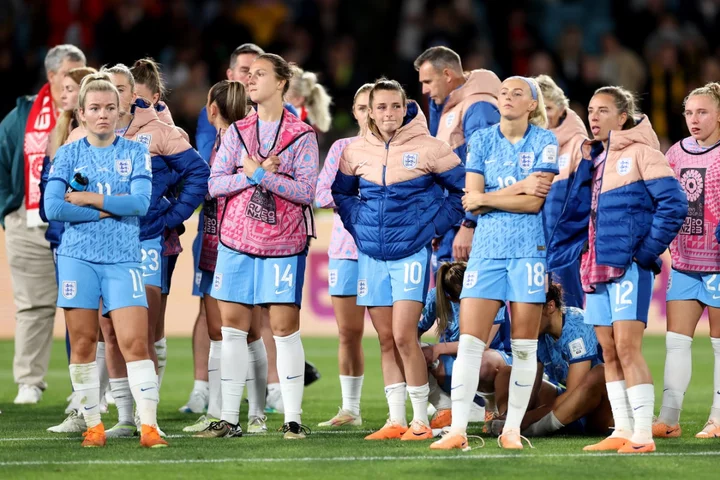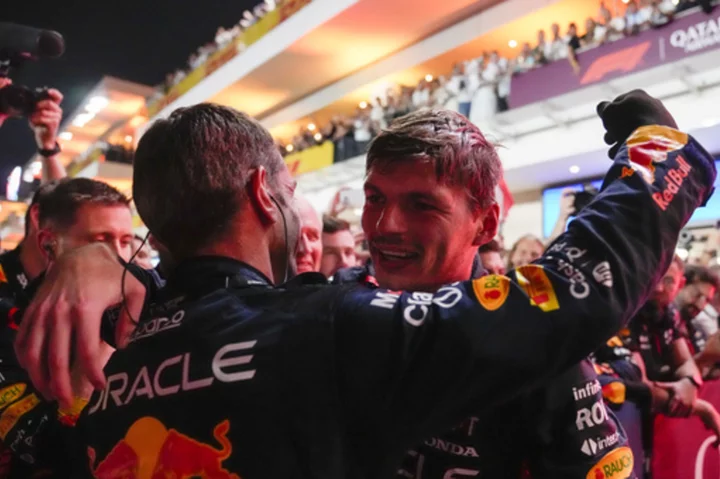The Women’s World Cup has concluded. After more than four weeks of dramatic action in Australia, Spain defeated England in the final on Sunday to reach the highest of peaks and, with it, footballing immortality.
It’s not over the top to suggest it as such, either; some of the sport’s most iconic and memorable images down the years have come from this very tournament and that very match, both in the women’s and men’s games: Birgit Prinz’s joy in 2007, Lionel Messi lifting the trophy adorned in a bisht in Qatar, Brandi Chastain’s shirt-off shootout celebration, Pele carried off the Azteca pitch in 1970.
Those images are as much a part of football history as the games and players themselves – yet the people who bring those moments, those stories to life are, by the very nature of being behind the camera, rarely as prominent.
Over in Australia and New Zealand, Getty Images is one of the most prominent global photography organisations providing such reproductions and reflections of what’s going on in the 2023 edition, which makes Lead Photographer Catherine Ivill perhaps better-placed – literally as well as figuratively – than most to detail just how the emotions of the occasion can be captured for those not fortunate enough to have a watching brief. “What I like most about it is telling the story for people who aren’t in the stadium. What we see and hear is only one thing; if you’re not there you need it describing. It’s about the atmosphere, in the game but also until long after the final whistle,” she told The Independent.
“A tournament like this has its challenges but these opportunities only come along every few years. The process doesn’t change, just the scale. We send a really strong, experienced team: we have 27 photographers and eight editors on the ground and we provide images across the world, just the same as at the men’s World Cup.”
And so to the action, the images, the moments which live on. The 2023 tournament started back on 20 July and it’s fair to say the magic started then, too, as co-hosts New Zealand won their first-ever game at any World Cup, ever.
“I was at the fan fest in Wellington during the opening game and the atmopshere was incredible,” Ivill explained. “That one goal changed everything for New Zealand football and people’s respect for it: that one goal has created a legacy for it in the country. It’s such an important moment, you see the subs, the smiling faces – it was a good day.”
And yet, football has two sides to every coin.
And when there is utter jubilation and euphoria at success on the biggest stage, so too must there be devastation, desperation, despair – as evidenced by Ivill capturing Italy crashing out at the group stage in heartbreaking, last-minute fashion.
“Italy gave it away. The utter devastation they were feeling is clear. If [celebratory] stuff is going on at the other end then it’s not always a good photo – you always initially think about the celebration being the good photo but Italy were near me so I focused on how they were feeling, it tells the same story but from a different side.”
Even in hard moments can come a softer side in sport though, a moment where rivals know what their beaten opponents are going through. “What I like most about the women’s game is the empathy,” Ivill says. “A lot of these players play together and it’s not always about the celebration at the final whistle. Nobody wants to feel that rubbish at the final whistle and they’re always very willing to go over and help the other team.
“It was a hard-fought game and they’re picking her up off the floor – I really like the empathy and the strength that this type of picture gives you.”
Sometimes the picture everyone wants to see isn’t necessarily a defining moment, but the players who matter most. One of the world’s finest players and one of the game’s most exciting young talents coming together briefly, for example.
“It’s a bit of both luck and planning. Most is luck but of course you have the players in mind. Linda Caicedo has been one of the standouts of the tournament so she’d be someone I would be focusing on – and it just so happens Lucy Bronze comes along at the same time. One’s Real Madrid, one is Barcelona – on paper the rivalry is there too.”
No matter how much planning and knowledge goes into proceedings, though, the surprising nature of football is what keeps people coming back – Japan thrashing Spain 4-0 in the group stage being a good example, as Ivill found out.
“That game I was on my own and I was waiting to see if Alexia Putellas was starting. She was, so I thought it would be all Spain attack and took up my position behind the goal they’d be heading to...then it’s 3-0 to Japan at half-time and I’m sat at the other end, head in hands! Japan ran riot that game and all I can remember is sitting at the wrong end!”
One interesting side note is the concept of taking photos she cannot actually see at the time – with England’s semi-final goal, scored by Lauren Hemp, providing a spectacular and unusual viewing angle. “We have a net cam and before the match we attach it to the goal. I’m firing the camera from a remote in my seat; it doesn’t work all the time as if the net gets hit it can swing or point the wrong way but it’s a great angle and only a few agencies do this, so it’s more of an exclusive image.
“We don’t have a view of it in-game – I just have to hope it’s still in the place I left it! We set it up and then it either happens or it doesn’t.”
As noted, Ivill remains in place long after the final whistle, long after fans have departed. Or most of them, anyway: the Japanese supporters have become much-admired for lingering later and tidying stadiums behind themselves and others. “They’re so well-known for cleaning up after matches. The players make origami figures and write thank you on the board in the changing rooms; the fans here have continued their tradition of going around after the game.
“It doesn’t finish for me when the whistle blows and this shows that. I don’t finish until ages after everyone else has left the stadium.”
The go-to, the standard, the expectations of match photos are the action shots: the goals, the saves, the moments people remember.
But being in place for such a shot is more than luck and finger-on-the-trigger reflexes.
There’s plenty of planning which goes into such an event, Ivill explains, whether from ensuring a team of three are focused on different groups or individuals in a penalty shoot-out, or to making sure potential occurrences are on their radar – such as Marta’s exit from her final World Cup appearance for Brazil.
Meanwhile, there are in-the-moment issues and challenges to deal with, particularly around VAR in the modern game.
Referees traipsing across the pitch to watch a monitor perhaps 40 yards away from the incident and the group of players can make a photo with context a “difficult” image to capture, with the digital screens a further complication as the LEDs are tricky to focus.
Ultimately, though, everyone is at the football for one thing: winning.
The celebrations which ensue – whether in the stands, in gatherings outside or right in the midst of the players themselves, are the ones which can linger longest in the memory.
Naturally, the emotions which can explode at that point are in large part down to the circumstances of the match: the “unusual” moment of Sweden’s goalline technology-confirmed penalty shootout triumph over USA led to an incredibly up-close and intimate moment, where jubilation in the extreme was clear to see. Of course, Sweden’s adventure ended with a bronze medal as England reached the final with victory over the hosts.
But the final chapter of this story saw Spain grasp their moment in the final. A moment which wasn’t the dream scenario for Ivill. one more chapter in this story to come, one more photo in particular to capture. And it’s fair to leave the final word on that to the person who’ll be taking it – and how pertinent that as football continues to catch up, a woman at the top of her profession will deservedly be in place to immortalise those who are celebrating.
“I know I’m on the pitch and I’ll be bench-side for the final, so for the trophy lift, the longest-lasting photo, we’ll stand next to each other and have different lenses to capture different images,” she said before Sunday’s final. “My perfect one will be the Lionesses picking it up. That’s the picture for me.”
Sometimes, the fairytale ending isn’t fulfilled.
Read MoreWomen’s World Cup 2023 LIVE: England head home after final heartbreak
Women’s World Cup prize money: How much do the winners get?
Lionesses receive surprise reception as they start journey back to England
Mary Earps’ Golden Glove award isn’t enough to convince Nike to sell her shirt
The two sides of the Women’s World Cup — and the truth about where power still lies
England’s impact will last far longer than pain of World Cup final defeat









